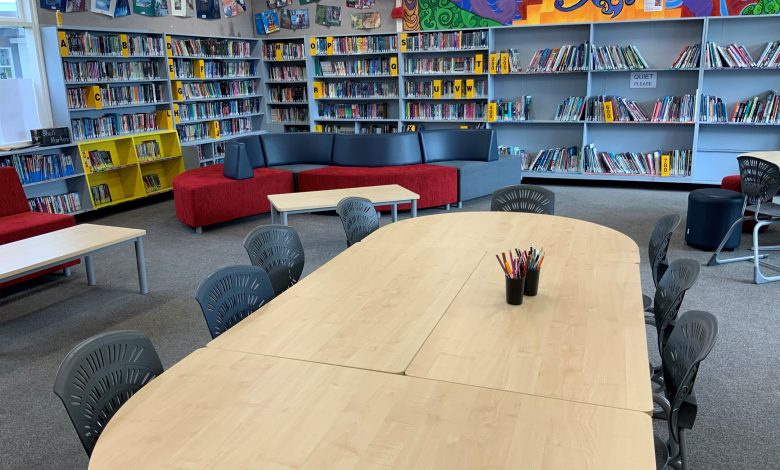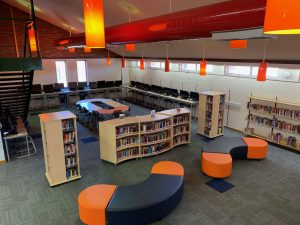No need to ‘shush’ in this library

Decades of research links a vociferous love of reading during childhood to soaring success in adulthood. Many studies also show reading to be a more telling predictor of fortune than a child’s family’s socio-economic status.
The technology boom has brought with it intense discussion around the feel and function of libraries. Library design manager at Furnware, Helen Jones, tells us that “with information available online, nonfiction collections have shrunk significantly and in many cases are non-existent, so book storage requirements have been greatly reduced.”
When we think about a library the first thing that automatically comes to mind for most of us is books – stacks of them! But libraries today are dynamic, multipurpose spaces for wild varieties of learning. Increasingly, Helen says, libraries prioritise “power integration in furniture like USB charging ports, banks of computers and wall mounted screens, and more reconfigurable furniture for online research, individual study, collaborative learning, lesson delivery, lunch time games clubs, and quiet reading”. She adds that there’s a rise in “adjacent reading rooms because the main library space is not the hush zone it once was”.
Perhaps we should think about a library in another way… as a ‘knowledge store’: libraries are the centre of teaching and learning in schools and wider community. Furnware Learning Space design consultant Marianne Elliott loves to help schools bring their libraries to life. She reveals: “They have evolved into learning hubs that aren’t just for reading but accommodate a variety of games, STEM activities, and research access.” To achieve this multi-purpose space, libraries (or as they are sometimes now called, innovation hubs or communication hubs) need to be fluid in design and in practice.

Elliott says, “The furniture needs to be flexible to allow ease of movement to create spaces, different zones and to be able to reconfigure the library space for different activities. I find that schools also like the use of standing-height tables to add levels and create extra space. And when you want to move your furniture around, castors can help tremendously. STEM and robotics, for example, may require floor space, so furniture will need to clear the floor.”
Colleague Ezra Murray, Furnware Learning Space design consultant, adds: “When it comes to choosing the best furniture options, the first place schools should start is the purpose of your library and how you can use the space. Your library refurbishment should match and support your school’s pedagogy.
“Think about furniture configurations where children can gather to do some collaborative group work, along with spaces for a whole class to sit, and also some spaces for children to work independently, to focus on whatever they’re doing.”
Elliott suggests establishing ‘reflection zones’ and ‘gather zones’: “Using hard surfaces and task seating for areas where students can research, collaborate and work, using soft seating and floor cushions for reading zones, while shelving can be used to separate spaces designed for specific tasks.”
As libraries move away from fixed shelving to more mobile and flexible options: “Modern shelving tends to be lower (good for sightlines), so students and teaching staff see over and through it while making access to books easier for all age-groups. They not only hold books but also provide much needed storage for bags and displays, as well as doubling as room dividers to create quiet spaces or corridors,” says Murray.
“We need to rethink these spaces as inviting, unique learning hubs that encourage students to learn and engage within them. They need to have zones to collaborate, gone are the ‘shhhhh – quiet, this is a library’, days!”









